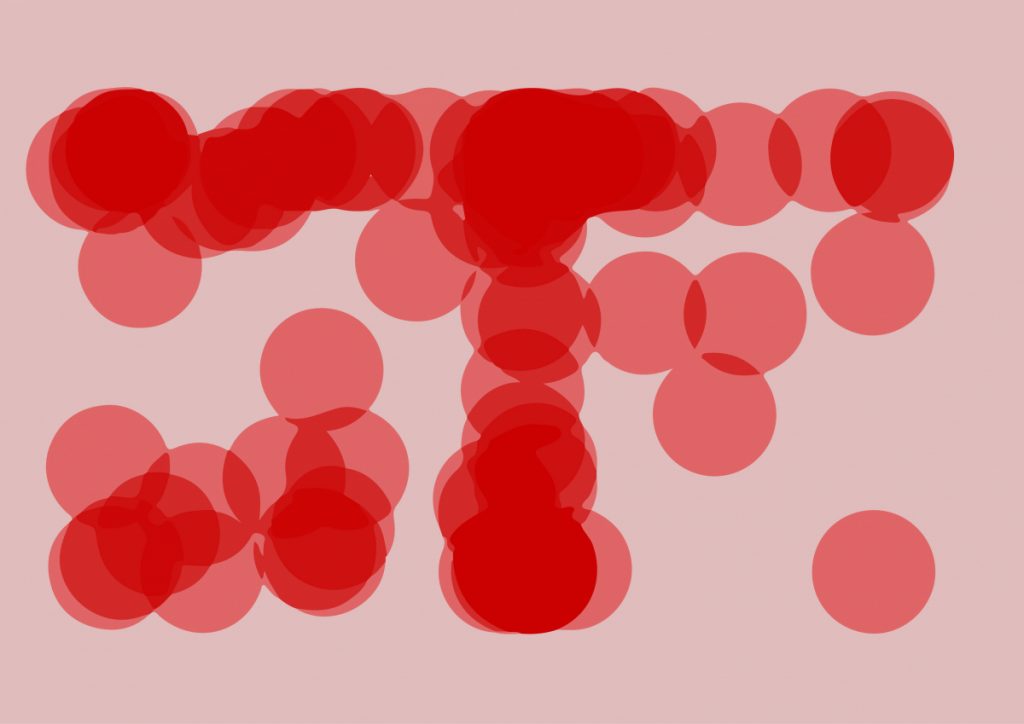At the start of this project I decided to explore combining digital and analogue processes/content as a starting point. I was immediately intrigued as to whether I could convert analogue information into a digital art form. Could I use technology to reveal hidden messages? Could technology add its own slant to human/natural/organic content?
The source content I chose was a set of 90 letters written to me over a period of 10 years. The content of these letters is private, suffice to say that the emotion contained within the written words fluctuates wildly. My goal was to try and visualise the emotion contained in these letters in a digital form. The challenge for any technology was that this emotional content did not exist in any material form – the emotion could only be genuinely inferred by a human reading the text. To me this added an extra level of interest in that a machine-based interpretation would apply its own clinical algorithm and may reveal something new or (most likely?) get the interpretation completely wrong.
To start with I submitted the text of each letter to a sentiment analysis tool. Sentiment analysis uses complex computational linguistics and data mining to analyse the affective state of the text. It is used extensively to assess the positivity or negativity of social media posts about big corporate brands. In my case I used a free tool that assesses text and gives a score ranging from -100 to +100 (so total negativity to total positivity). I graphed the results below, where each circle is a single letter that has been rated on the sentiment analysis scale.

Horizontal: date, Vertical: sentiment (- to +)
Evaluation
We can see how many of the letters have been rated as very positive in their content as they are nudging along the top. However, in the middle years things get a lot more bouncy. This is a powerful outcome for me personally and I do enjoy how only I can truly interpret what we are seeing. But what if I passed this to a naïve viewer? Would I give them any context? Would they see it as a considered piece of art? Is there enough depth? My gut feeling is that the concept is powerful and unpredictable but it is far from an endpoint.
This outcome has a powerful impact personally but my conclusion is that the result reveals little of artistic value. The digital tool has made a crude attempt to graph human emotion and a plethora of thoughts and feelings have been condensed into blobs but this analysis has polarised the source material using a crude algorithm. During this experiment I had the mindset of a scientist not an enquiring artist and I don’t feel comfortable that my own hand is not visible. I question the artistic merit but do I know there is potential to be had that requires a deeper push.
A discussion I’ve come across is where exactly is the art in digital art? If it’s in the visual outcome then it would only take a change to one condition in the algorithm to completely change that outcome. We manipulate the algorithm (or the data) not the visuals to make the art so the digital artist needs to think differently. So the art is partly in design and manipulation of the algorithm. Hence the fact that I felt more of a scientist is probably to be expected and understood.
The power of digital is that it can condense huge data sets and cast its own spin so what we’ve shown is how quickly we can iterate through ideas and yield the unexpected – both positive strategies for further experimentation.
Next steps
This quick experiment has opened a door to morphing between data types and showed the art of the possible. But a deeper understanding of what we aim to achieve is required. We have turned analogue data into digital or (more accurately) subjective into objective data but we could extend this to turn analogue data to digital but then reinterpret the digital in a new analogue form. What springs to mind is to take the result above and perform a dance using the blobs as feet placements or even an impossible game of Twister. Suffice to say that I think there is rich potential.
Beyond more experimentation with other sets of data, research on cutting edge digital artists and more specifically generative art will be invaluable. Data can also be visualised in different formats – as colours, moving images and sound. Sound as an output format is not something I have any experience with but that will be put on my experimentation and research list.